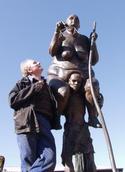Social Art and Why The World Needs it
By Artist Jens Galschiøt
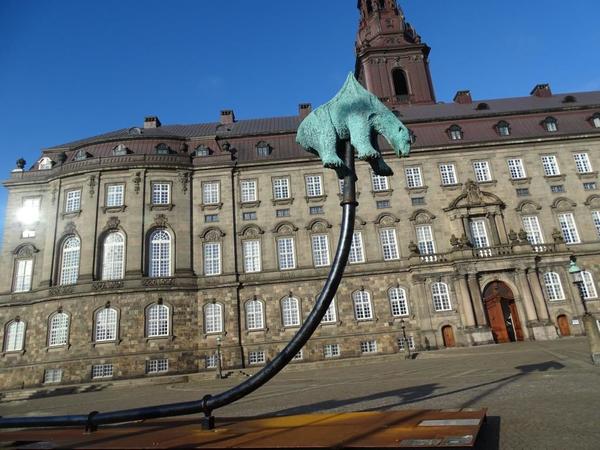
The sculpture Unbearable, a polar bear impaled on a graph over man made CO2 emission
(by the Danish Parliament)
Dear
Social art is dead – or at least it is to the established art world! That is unless the socially minded artists become popular and recognized in the general population, thus working 'around' the educated curator gatekeepers to become recognized. This issue is important because it defines which type of art we see in museums and public spaces.
Artists like Banksy, and even Picassos Guernica, were initially neglected by the art elite. And the present art codex is especially focussed on art which is not too obvious. If the art piece has a specific point, it is not 'real' art - the spectator should be able to interpret anything from it.
But maybe the world is actually in dire need of more art with social and political focus. At least this is one of Australian Ph.D. Elizabeth Boulton’s arguments in her recent research paper which was published in WIRES Climate Change.
She argues that "we need 60,000 art-s and humanities experts to focus upon the intangibles – the communication, engagement and meaning-making aspects of the problem". This is seen as a counterpart to "the global Future Earth initiative, in which a team of around 60,000 scientists and social scientists has been assembled to understand and report on the physical, tangible dimensions of the problem".
So (how) can art change anything? Artists have always had a social function: to question and criticise the ruling class and comment on the general perceptions of the social situations. If anything, it is needed more than ever in the present day, where media, pictures, info-overload and complicated geo politics are a constant part of our lives. In today’s globalized and media dominated world, art has become even more important as a communication tool.
An art piece can say more than a thousand words. In a simple glimpse it can challenge old – and create new - understanding of complex situations. Art goes deep into ones consciousness leaving an image in the mind of the beholder.
Medias can use art pieces to tell an interesting and complicated story in an easy and visual way. Take, for instance, the concert by the world famous pianist Ludovico Einaudi, which was performed in the Arctic on a floating and melting piece of ice. The concert was arranged by Greenpeace and has been seen by millions on youtube and boosted the climate change debate.
One might ask if it is not for our politicians stop global climate change? Well it sure hasn't happened yet. Last year a Scandinavian professor analysed why the population isn't more scared and doesn't protest about the upcoming climate catastrophe, which will shape our future. It turns out, he says, that what we experience is a downward spiral: The population can't imagine that the climate is actually collapsing, and will vote for the politicians who 'allow' us to consume and live the best way possible. Thus we prefer to elect and listen to the politicians who talk as if the climate is (relatively) under control, and the media quotes these politicians as well.
Here is a better quote:
Art can no longer be art today if it does not reach into the heart of our present culture and work transformatively within it that is, an art which cannot mould society — and through this naturally operate upon the core questions of our society — is not art.
Joseph Beuys
During COP21-climate conference in Paris I made a sculpture called Unbearable. It depicts a polar bear, impaled on a 5 meter tall graph depicting human CO2 emission. My hope is that people will see it and next time they hear the word 'climate change' a picture of an impaled polar bear on a climate graph will appear in their memory.
There are indications that art with social and political focus is on the rise. At Copenhagen Business School a network called Sacre has seen the light of day. It focuses on making new relations between art, culture and science. The before mentioned PhD report and discussion that followed is another. In December I was invited to speak at Sorbonne University in Paris, for a group of Arctic-scientist. Their problem was how to increase the public and media interest for their scientific discoveries. The same scientists are now planning to exhibit the impaled polar bear in Greenland, Iceland and Northern Norway in order to point out how critical the situation is.
Art can be used to visualize science. To make boring reports and suited peoples' talks edible and interesting for the public without diluting the complicating and worrying points. It can create new angles on how one sees the world. I think artists have a certain responsibility to use this force to help shape the world into a better one.
On August 25th-27th, 2016 a grand cultural summit in Nykøbing Mors, Denmark takes place. It is a new centre stage for discussing arts and culture and I have been invited to a debate on the role of the artist in our society. Hopefully this summit will be yet a small step on the way for a revival of social art.
Best Regards
Jens Galschiøt – Artist, and chair in the NGO 'Art In Defence Of Humanism' (AIDOH)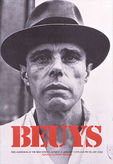 Joseph Beuys, artist (1921 – 1986) describes the idea of social sculpture as a gesamtkunstwerk, for which he claimed a creative, participatory role in shaping society and politics.
Joseph Beuys, artist (1921 – 1986) describes the idea of social sculpture as a gesamtkunstwerk, for which he claimed a creative, participatory role in shaping society and politics. In the Name of God. - About Catholic influence against contraception and sexual education in 3rd world countries.
In the Name of God. - About Catholic influence against contraception and sexual education in 3rd world countries.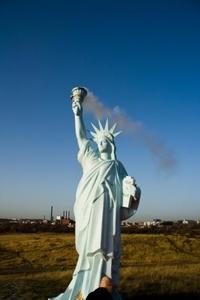 Freedom To Pollute. 6 meter tall response to western consumption.
Freedom To Pollute. 6 meter tall response to western consumption.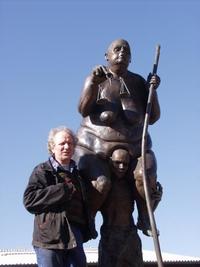 Survival of The Fattest. European Justitia (the goddess of justice). "The man is sinking under my weight. I will do anything I can to help him. Except stepping down from his back"
Survival of The Fattest. European Justitia (the goddess of justice). "The man is sinking under my weight. I will do anything I can to help him. Except stepping down from his back"Galschiot: work chronology (from Wikipedia )
Bigger projects/Sculpture-groups
- Cocoon (1992): 4 meter high 12 meter in diameter, sculpture consisting of 22 shields in rustproof steel with bronze-faces breaking through the steel. First exhibition at the international kunsthal på verdensudstillingen expo92 in Sevilla in Spain.[23]
- My inner beast (1993): concretesculpture 230 cm high . 22 sculptures were put up in the public space in European cities, as a Street art action that should set focus on increasing putrefaction in Europe.[24]
- The Little Prince (1995)
- Elysium, The occult temple (1995): A 500m2 installation that was used to perform theater/music and the danceperformance Elysium in.[25]
- The Silent Death (1995): Street art happening with the hanging of 750 doll corpses and distribution of 13.000.000 “banknotes” under the social topmeeting (FN) in Copenhagen 1995.,[26][27]
- Pillar of Shame (1996 - 201?): An 8 meter high sculpture is put up to mark a crime. The sculpture is an obelisk formed of human bodies and has been put up in Hong Kong, Mexico and Brazil.
- Young People in Glass Tubes: (1997) 3,5 m high 15 m in diameter. An art installation on the town hall square, where 6 glass containers with water in (as kind of a laboratory cobs) containing 6 young people corpse (in silicone) - The installation took the temperature on the youths mental state in Copenhagen.[28][29]
- The Earth is Poisonous (1997): 20.000 m2. Art installation with 2500 white crosses, placed in Odense. As some kind of time image, 500 high school students wrote their opinion about what they would do personally would do to counter the environment problems.[30][31]
- The Messenger (2000): 5 meter high cobber sculpture of a female messenger figure wearing cape, with computer controlled light boards in the background. The lead sculpture under Jubilee 2000 campaign in Denmark, attended in the world bank’s demonstrations in Prague and stood in front the main entrance to environment in Copenhagen,(cop15).[32][33]
- Hands of Stone (2000): 2000 m2. Art installation with 3,000 unique children's hands in concrete. Cooperation with Amnesty about child soldiers.[34][35]
- The Tenth Plague (2001): Art performance with thousands of real dollar bills pasted on 10 canvases on 2x1 meter, painted on with human blood. Protest together with ”doctors without boards” against the pharmaceutical industries lawsuit against South Africa about copy medicine.[36][37]
- Den yderste stilhed (2001): 12x 6 meter in copper/wood. Performance/set design for a play by the Brutalia theatre and Jonathan Paul Cook about Ted Kaczynski, also known as the Unabomber. It now works as a stage at Galleri Galschiot.[38][39]
- Freedom to Pollute (2002): A 6 meter high Statue of Liberty with a smoking torch that created a dialogue about the Western civilizations individual thoughts about freedom. Used at environmental manifestations in Denmark, Luxemburg, Rostock, Sweden and many other places.[40][41]
- Survival of the Fattest (sculpture) (2002): Survival of the Fattest. A 3 meter high copper sculpture of an enormous woman figure (Justitia) who is sitting on the back of a man.
- The Hunger March (2002): 170 cm high copper sculpture installation, consisting of 27 starving boys. The sculptures has participated in many manifestations around the world.
- The Nightmare (2002): 20x20 meter, Performance/art installation with hundreds of sculptures, among other things the Fenris wolves blowing 8 meter big fireballs, inspired by Hitler's architect Albert Speer and Martin Luther King’s speech ”I Have a Dream”. Put up at Roskilde Festival 2005 and other places in Denmark.[42][43]
- The Storyteller’s Fountain (2005): Big H.C. Andersen sculpture, put up at the Townhall Square in Odense 2005-2011. The sculpture was drowned in Odense Harbor in 2011, during a great protest march against Odense municipality.[44][45]
- Mad Cow Disease (2005): Art installation, a 12 meter high balancing weight with a stuffed cow in one of the bowls, and 5 hunger boys in the other, put up at the Town Hall Square in Copenhagen, and at the WTO meeting in Hong Kong.[46][47]
- Golden calf (2005): 8 meter high copper sculpture of a golden calf, coated in 24 carat gold leaf. Displayed in Gent, Belgium, and now permanently at the Town Hall Square in Fredericia.,[48][49]
- Børneliv anno 2005 Den lille pige med svovlstikkeren (2005): 10 sculptures of a 9-year-old girl sitting with her matches and a cell phone.[50][51]
- In the Name of God (2006): Sculpture installation in copper, consisting of various sculpture constructions of a pregnant, crucified teenage girl.
- The Color Orange (2008): An art project, where the color orange was used as a signal for human rights violations in China during OL 2008.
- SevenMeters (2009): Lots of art installations during the COP15 environment meeting in Copenhagen. Among other things a 24 km long light chain with blinking red lights representing a 7-meter water level, going through Copenhagen and in Bellacenteret. The project was supported by the ministry of foreign affairs.[52][53]
- Ending Homelessness: (2010til 2013) 13 copper sculptures of homeless people, size 1:1, on tour in England, Ireland, Italy, Belgium, Hungary, Portugal, Romania, Norway and Denmark. Also put up at the European Parliament. In collaboration with Project ’Udenfor’ and Fiantsa.[54][55]
- The refugee ship M/S ANTON (2010 til 2013): A floating art installation with 70 copper refugee sculptures on the old Danish fishing cutter M/S Anton. It has been on a tour to many coast cities in Denmark, and in 2013 it is going on a tour in Scandinavia. In collaboration with “Levende Hav”. The project is supported by Danida.[56][57]
- Balancing Act (2005-2015): Copper sculptures balancing on high (6 til 15 m) poles, some of the sculptures is 3 meters high. Symbol of UN 10 years “for education for sustainable development” (UBU). They have been exhibited in Kenya, India, Norway, Sweden, Finland and Denmark. 4 of the big ones is put up at the castle square in front of the Danish parliament from 2009-2012.[58][59]
- Fundamentalism (sculpture) (2011/12): Copper, 4 meter high, 9 meter in diameter. Sculpture installation consisting of religious books, making the word ”FUNDAMENTALISM".
- Unbearable (2015): A real sized polar bear impaled on an oil pipeline, 6 meter high, 17 meter long. Displayed at COP21 in Paris.[60][61]
Contact information
Artist Jens Galschiot
+ 45 6618 4058 mobile + 45 6170 3083 aidoh@aidoh.dk
General information about Galschiøt
About Jens Galschiøt See Wikipedia:
Portrait of Jens Galschiøt (engelsk) CV (PDF)
Galschiots Homepage: Galleri Galschiøt
Contact to Jens Galschiøt:
E-mail: aidoh@aidoh.dk,
Internet: www.aidoh.dk,
tel. + 45 6618 4058, mobile + 45 4044 7058
Gallery Galschiøt Banevænget 22, DK-5270 Odense, Denmark
******************************************
******************************************
Subscrition and unsubscription of informations from Jens Galschiøt
If you want to be unsubscribed then click here: Unsubscribe
